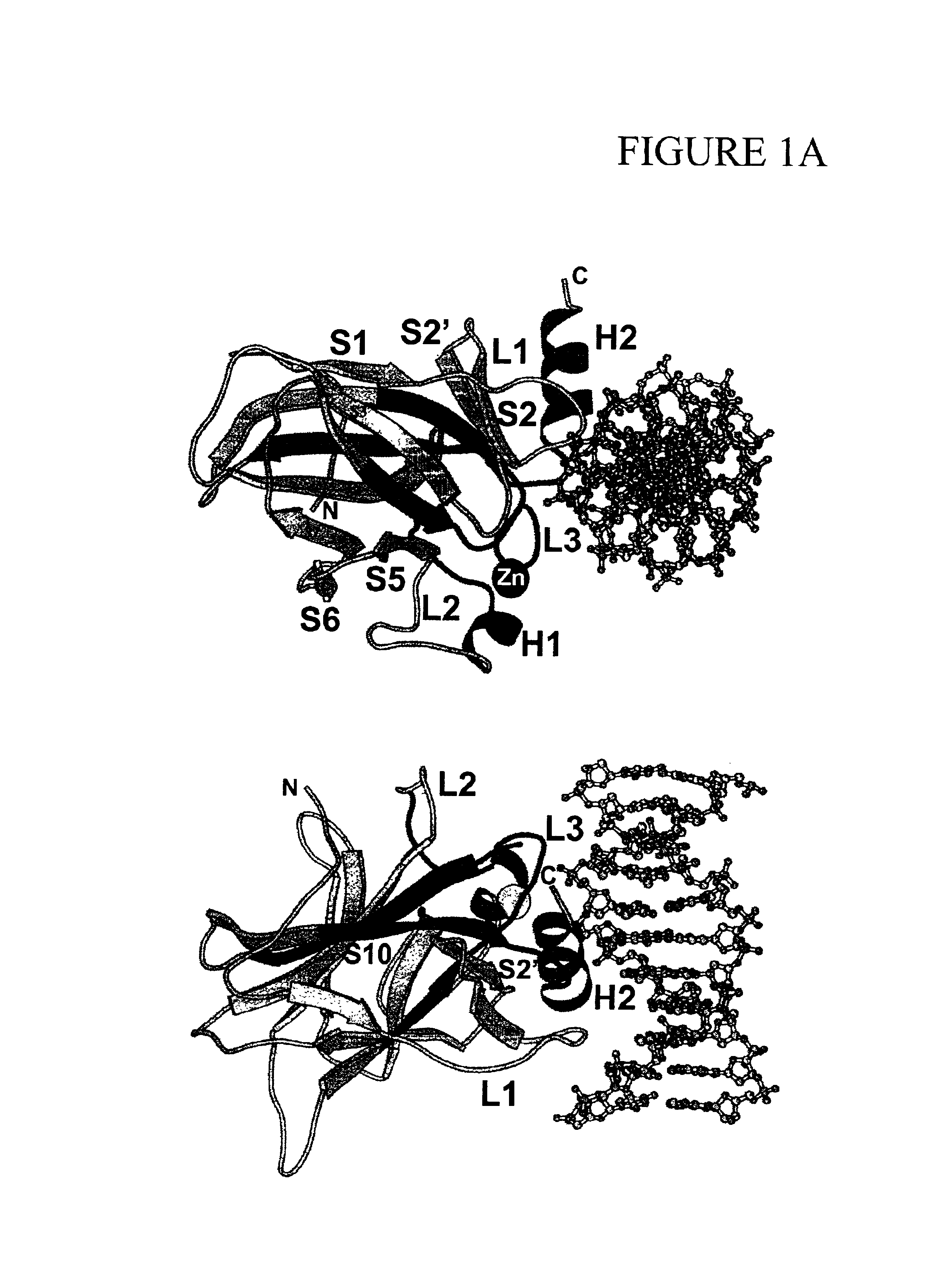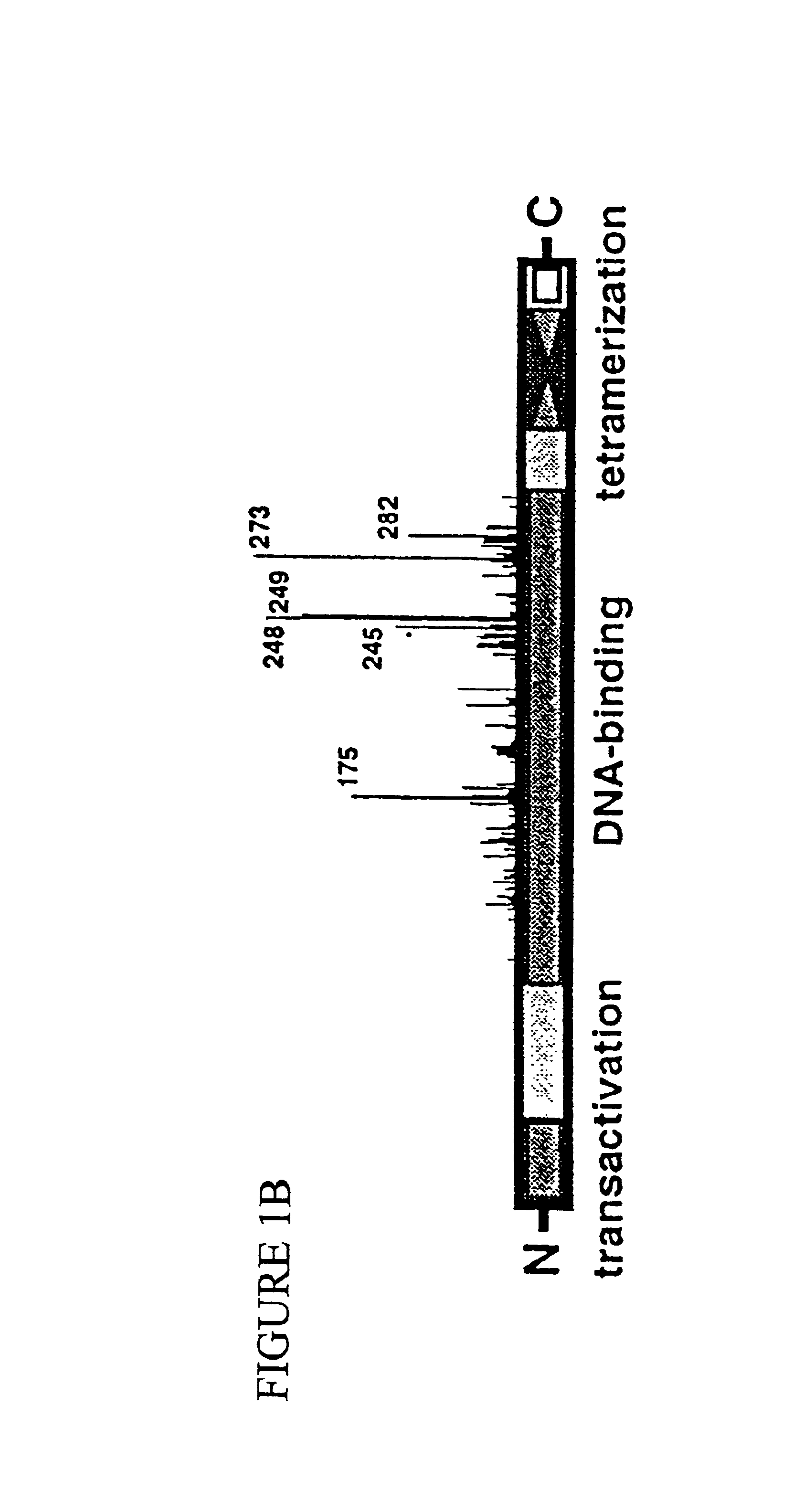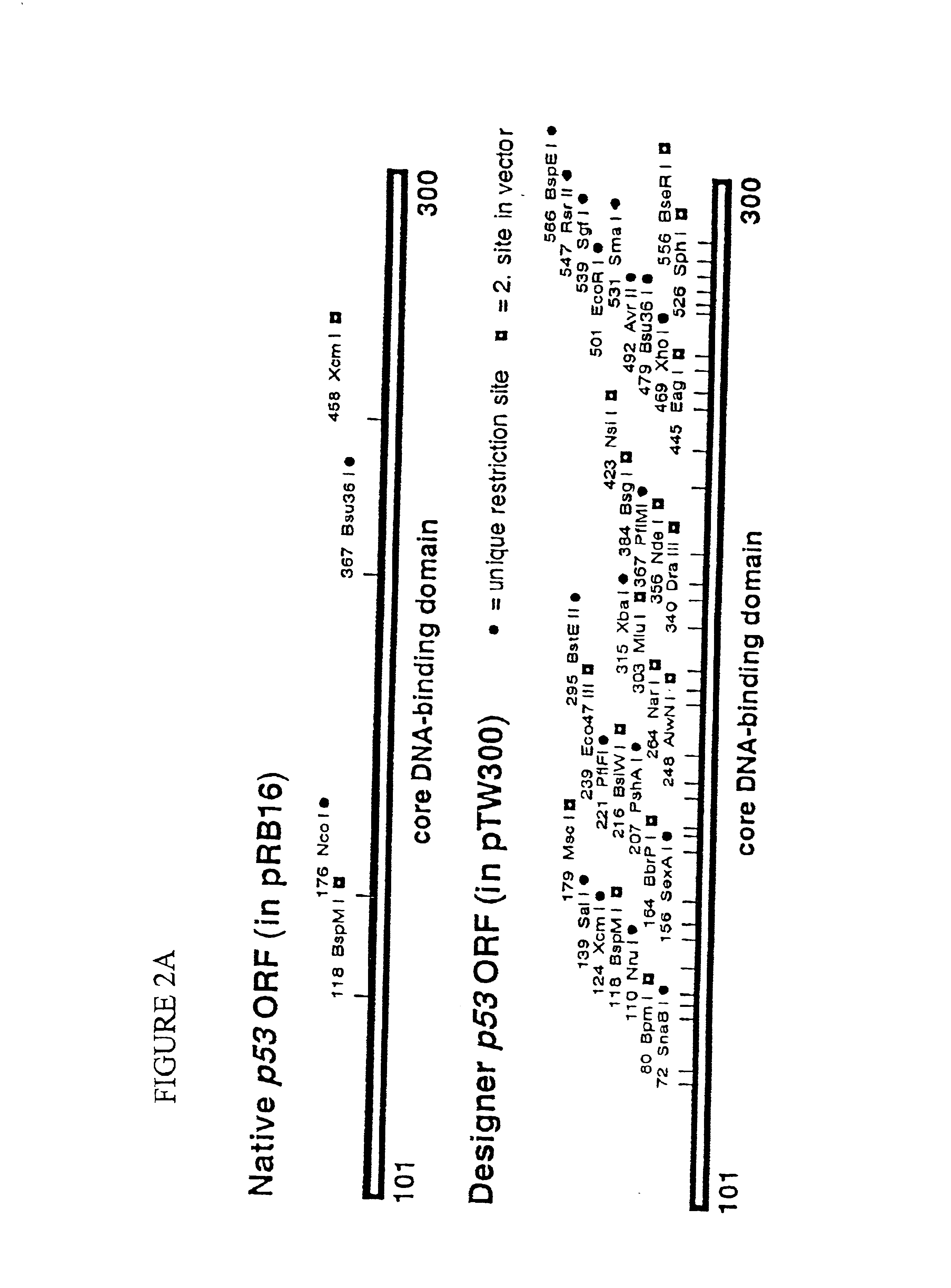Engineered open reading frame for p53
a technology of p53 and reading frame, applied in the field of cancer therapy, can solve the problems of dna damage, decreased fidelity, and not always unequivocal, and achieve the effect of preventing post-translational modification
- Summary
- Abstract
- Description
- Claims
- Application Information
AI Technical Summary
Benefits of technology
Problems solved by technology
Method used
Image
Examples
example 1
[0045]A new p53 open reading frame for identification and evaluation of intragenic suppressor mutations of the most common p53 cancer mutations. Our previous study clearly established that various mechanisms for stabilizing the p53 core domain exist; and it is very likely that additional ones are waiting to be discovered (Brachmann et al., 1998). In light of the discovered p53 suppressor mutations and the need for a comprehensive analysis for the most common p53 cancer mutations, we have designed a much-improved strategy that will require more initial effort, but dramatically streamline future analyses. The design is based on several shortcomings that we encountered and includes the synthesis of a new p53 ORF with multiple restriction sites, as well as specific codon choices for p53 cancer mutations to allow for easy secondary screens.
[0046]Once we had isolated the suppressor mutations in our prior study, we were very interested in establishing whether these mutations would be able ...
example 2
[0051]Construction of expression cassettes for the most common mutated p53 proteins in humans. A comprehensive analysis is needed to better understand the structural dynamics of the p53 core domain and to potentially find suppressor mutations that have a universal effect. We chose to study the 50 most frequent p53 cancer mutations. Based on several international databases for p53 cancer mutations (Beroud and Soussi, 1998; Cariello et al., 1998; Hainaut et al., 1998), we initially selected a total of eight mutations (FIG. 3). Each of these cancer mutations represents between 1.6% and 4.2% of all human cancers with p53 mutations, totaling 22% (estimated to represent 73,000 cancer patients per year in the United States and 530,000 cancer patients worldwide), (Harris, 1996a, 1996b). Besides their high frequency, these eight cancer mutations also well represent the most important structural motifs of the p53 core domain (L2 loop: codon 175, L3 loop: codons 245, 248 and 249, loop-sheet-he...
example 3
[0053]Identification of suppressor mutations for the most common p53 cancer mutations. New suppressor mutations have been isolated in the new p53 ORF of plasmid pTW500. In order to isolate the new suppressor mutations alone, they will be subcloned into pTW500 and into the pCMVneo-based mammalian expression plasmid for p53 (See Example 1). All subcloning steps will be confirmed either by sequencing or by verifying the loss or gain of a unique restriction site.
Materials and Methods
[0054]Transcriptional activity of wild-type p53 in yeast. This assay scores for the transcriptional activity of wild-type p53 and uses an artificial reporter gene, 1cUAS53::URA3, with a synthetic consensus p53 DNA-binding site upstream of URA3 (Brachmann et al., 1996; Vidal et al., 1996). Human p53 is expressed from a yeast CEN expression plasmid under the control of the constitutive promoter ADH1. This p53 yeast assay is unique in that it not only allows selection for, but also against functional p53 (Brach...
PUM
| Property | Measurement | Unit |
|---|---|---|
| nucleic acid | aaaaa | aaaaa |
| genetic stability | aaaaa | aaaaa |
| frequency | aaaaa | aaaaa |
Abstract
Description
Claims
Application Information
 Login to View More
Login to View More - R&D
- Intellectual Property
- Life Sciences
- Materials
- Tech Scout
- Unparalleled Data Quality
- Higher Quality Content
- 60% Fewer Hallucinations
Browse by: Latest US Patents, China's latest patents, Technical Efficacy Thesaurus, Application Domain, Technology Topic, Popular Technical Reports.
© 2025 PatSnap. All rights reserved.Legal|Privacy policy|Modern Slavery Act Transparency Statement|Sitemap|About US| Contact US: help@patsnap.com



